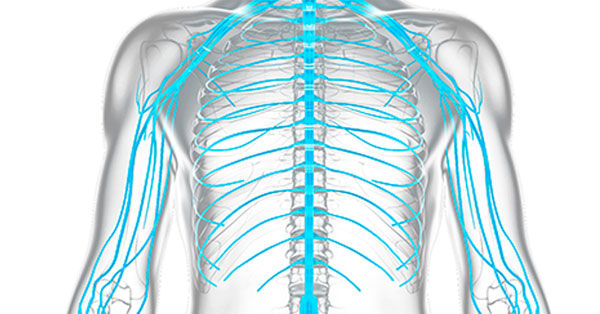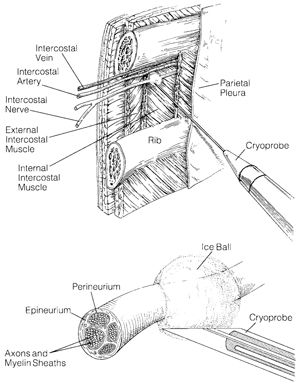Cryoanalgesia & Heart Surgery Pain: What Should Patients Know?
Written By: Adam Pick, Patient Advocate, Author & Website Founder
Page Last Updated: May 14, 2025
If you didn't know... Heart surgeons are using cryoanalgesia to remediate pain after heart surgery. You may have heard of – or even experienced – this unique method of pain management.
Many patients have questions about cryoanalgesia such as, “How does it work?” and “Is it effective?” So, I researched this important topic to help you learn the top 6 facts about cryoanalgesia.

What Is Cryoanalgesia?
Cryoanalgesia is a method of relieving pain by applying extreme cold to the affected nerve, causing an interruption of pain impulses to the brain. It’s no surprise that the word cryoanalgesia comes from “cryo-” meaning “involving or producing cold,” and “-analgesia” meaning “an agent producing diminished sensation to pain.”
The application of extreme cold to tissue creates a conduction block – which is a reduction of motor action by a nerve – similar to how local anesthetics work. Cryoanalgesia can be used for many persistent, painful conditions, including the pain you may experience after heart surgery.
According to the U.S. National Library of Medicine, National Institutes of Health, the use of cold temperatures for pain relief has been in medical practice for thousands of years. In ancient Greece, Hippocrates – who is credited with coining the Hippocratic Oath – wrote about snow gathered from mountains being applied to wounds for pain. Napoleon’s surgeon general remarked about the relatively painless amputation of the limbs of soldiers frozen in the Prussian snow.
Modern cryoanalgesia traces its roots to the early 1960’s by Dr. Irving Cooper who developed a device that used frozen liquid nitrogen administered through a hollow tube.
How Is Cryoanalgesia Administered?
The treatment is usually performed after a diagnostic procedure using local anesthetic. A small incision is made and a tiny cryoprobe – a long, slender, pointed surgical instrument – is inserted.

With the cryoprobe in place, a machine connected to the probe is turned on and a small ball of ice forms around the tip of the probe. The nerve is frozen, resulting in an interruption of the transmission of the pain impulse. The probe is then removed and a small bandage is applied.
According to the European Journal of Cardio-Thoracic Surgery, cryoanalgesia is considered a simple, inexpensive, long-term form of post-heart surgery pain relief, which does not cause long-term tissue or nerve damage.
Is It Effective?
“The post-surgery recovery process dramatically changed for us a few years ago when we became skilled at performing cryoanalgesia,” says Dr. Marc Gerdisch, Chief of Cardiovascular and Thoracic Surgery at Franciscan Health in Indianapolis, Indiana.
 Dr. Marc Gerdisch
Dr. Marc Gerdisch
Dr. Gerdisch has performed in excess of 6,000 heart operations, and more than 4,000 of those have been valve replacement operations. “Cryoanalgesia is a method for creating a nerve block,” describes Dr. Gerdisch. “It allowed us to perform the operation essentially without pain. So we have patients all the time now who tell us they’re not hurting at all.”
So yes, cryoanalgesia can be highly effective.
What Pain Can I Expect To Feel After Surgery?
Since the negative effects of heart surgery on pulmonary function can be mitigated by effective pain treatment, it is not surprising that some heart surgeons have become strong advocates of analgesic methods known to limit the pain accompanying heart surgery.
Effective pain management not only helps you feel more comfortable, but it also helps you recover faster and may even reduce your risk of developing complications, such as blood clots or pneumonia.
If your pain is well managed, you will be better able to complete tasks that are important to your recovery, like walking and deep breathing exercises.
Every person is unique, and you may or may not have the same type of pain another person experiences. Communicate with your surgeon and healthcare team about the pain you have after surgery, which, according to the Cleveland Clinic, can include:
- Muscle pain: You may feel pain in your neck, shoulders, back or chest from lying on your back on the operating table and in the care unit.
- Throat pain: Your throat may feel sore or scratchy from the breathing tube.
- Pain from chest tubes: You may have discomfort from the chest tubes that were placed to drain fluid, blood and air during surgery.
- Incision pain: You may feel pressure or burning at the incision site(s)
Does Cryoanalgesia Improve Post-Surgery Pain?
The Oxford Journal of Cardiovascular and Thoracic Surgery analyzed 12 medical studies that provided evidence to answer that question. Patient pain scores, additional opiate requirements and change in lung function were all reported in the trials.
The studies had different variables such as the source of cryoanalgesia (some used CO2 while others used nitrous oxide), the duration of the freezing, the temperature obtained and the number of intercostal nerves –situated between your ribs – that were treated.
Many results were favorable for patients of cryoanalgesia as indicated by lower post-operative pain scores. Patients had positive results for lung function. Patients also often needed fewer narcotics and opiates – such as propofol or fentanyl – after receiving cryoanalgesia.
Is Cryoanalgesia Right for Me?
Your surgeon will work with you to decide what type of pain management would be most beneficial for you after surgery.
According to the Cleveland Clinic, this is based on:
- Your medical history
- Results from your lab tests
- Your physical exam
- Type of surgery you are having or have had
After surgery, you will be assessed daily to make sure that you are comfortable, adjust your therapy if needed, and monitor you for any side effects. Whether cryoanalgesia is part of your post-surgery pain therapy or not, always make sure you are comfortable with your treatment plan.
Keep Learning!
To help you learn more about sternum healing and pain management after heart surgery, you may also like:
- Rigid Sternal Fixation: Top 6 Facts for Patients
- Rapid Recovery Protocol 2.0 with Dr. Gerdisch
- Surgeon Q&A: What About Sternum Wires, Healing & Infection
References:
The Free Dictionary: Medical Dictionary https://medical-dictionary.thefreedictionary.com/cryoanalgesia
English Oxford Dictionary https://en.oxforddictionaries.com/definition/us/cryo-
Merriam-Webster Dictionary https://www.merriam-webster.com/dictionary/cry
New York Spine and Wellness Center http://www.nyspineandwellness.com/documents/Cryoanalgesia.pdf
“Treatment of Chronic Pain by Interventional Approach” The American Academy of Pain Medicine https://books.google.com/books?id=TbFDAAAAQBAJ&pg=PA277&dq=#v=onepage&q&f=false
U.S. National Library of Medicine https://www.ncbi.nlm.nih.gov/books/NBK482123/
The Cleveland Clinic https://my.clevelandclinic.org/departments/heart/patient-education/recovery-care/surgery/pain-control
US National Library of Medicine National Institutes of Health https://www.ncbi.nlm.nih.gov/pubmed/16880882
European Journal of Cardio-Thoracic Surgery https://academic.oup.com/ejcts/article/20/3/502/365088
Oxford Journal of Cardiovascular and Thoracic Surgery https://www.ncbi.nlm.nih.gov/pmc/articles/PMC3895069/
“Anesthesiology: Trusted Evidence: Discovery to Practice” Preventing and Treating Pain after Thoracic Surgery http://anesthesiology.pubs.asahq.org/article.aspx?articleid=1923467
Page created: September 17, 2020





